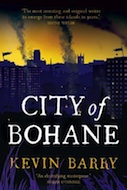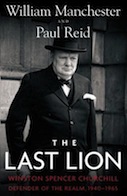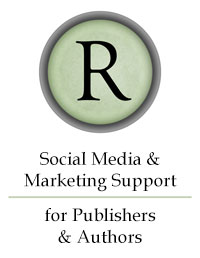The debate over ending the practice of buying returnable has been raging for years, but lately it seems to have grown in impetus. I’ve been trying to think through the issue and have had many interesting talks with publishers and booksellers. This post is an attempt to distill those discussions and spark some new ones.

In general, I’m supportive of the idea that we as an industry need to end or sharply reduce returns: they negatively affect a publisher’s ability to budget accurately over the course of a year, and they give larger accounts a disproportionate influence over a publisher’s fate. However, so much of the discussion has been focused on the question of whether or not to allow returns. This seems too simplistic. There are several core assumptions underlying the book industry, and a range of actions and behaviors based on these assumptions that all need to change in order to eliminate returns (if that’s indeed the right thing to do).
I want to explore each of the four cornerstone assumptions/truths that make the book industry what it is. As an organizing metaphor, I suggest that we picture the book industry as a simple table (four legs, one horizontal surface): radically change one of these basic assumptions and you’ve essentially cut one leg off, with predictable results.
A. Books are physical objects made of paper bound between covers.
Still true, but ebooks are gaining market share. For more discussion about ebooks, check out last week’s post.
B. Books that do not sell can be returned within a certain amount of time.
This key fact influences almost all book buyers’ decisions. When a rep is excited for a book but the store’s buyer is not, it’s a relatively small thing (at least it was before the recession) to bring a couple of copies in and test their hunch — as long as they don’t have a hunch about every title the buyer wants to skip. If books were nonreturnable, few would do that.
Publishers are publishing more than ever before. How much is too much? My answer is, more than can be given meaningful marketing support. At the keynote breakfast on the first day of the recent ABA Winter Institute, Harper Studio head Bob Miller referred to big publishers having a collective 20 “big” new books (I don’t think he was talking about the established brand name authors) with print runs of 200,000 copies and above. That state of affairs can only be supported by returnable terms, because buyers simply couldn’t take that many chances nonreturnable. (Many don’t already, skipping huge chucks of publisher’s catalogs.) Publishers would have to publish far fewer titles, perhaps only 25% of the speculative new voices they currently publish. They would then have to put more marketing and publicity effort behind those books in order to show store buyers that they are serious about making these titles, and not taking the usual spaghetti approach of launching a lot of books and supporting only the few that gain some traction in the media.
Publicity/marketing support would need to be for whole (frontlist) life of a title, not just the first month. Stores would be more likely to give unknown authors a chance if their publisher has a reputation for reliable lifecycle marketing/publicity.
At the indie store level, buying tends to be handled by one or a small number of buyers, who often spend less time on the sales floor than their colleagues. This leads to situations where many of the booksellers in a store may know little about most of the new books (I’m thinking mainly of the new titles which receive coop support for buys above a certain range, here). These books get a couple of weeks at FOS, many fail to catch on and then are banished to section or overstock until they can be returned. Often nobody handsells because only the buyer knows anything about them.
If stores were going to switch to completely nonreturnable terms, then buying would need to involve all booksellers, not just a single buyer. The whole staff would need to take ownership of selection and handsell like crazy (because after all, with increased risk we’d buy relatively fewer titles, and therefore need those titles to turn faster).
 Stores would need to develop lifecycle plans for their inventory. There could be no more overstock, and no more banishing books to a shelf in the back room awaiting return because you’re sick of looking at them. Bookstores would need to cycle titles through various display options until they’re sold: FOS, in-section tables/endcaps, seasonal or themed promotional space, staff favorites, in-section face-outs, book club suggestion area, mark-down tables, etc., etc.
Stores would need to develop lifecycle plans for their inventory. There could be no more overstock, and no more banishing books to a shelf in the back room awaiting return because you’re sick of looking at them. Bookstores would need to cycle titles through various display options until they’re sold: FOS, in-section tables/endcaps, seasonal or themed promotional space, staff favorites, in-section face-outs, book club suggestion area, mark-down tables, etc., etc.
Currently, you can argue that publishers bear most of the risk under the current business practices: they might get all the books they print back. (Yes, I know a lot of indies could make an equally strong argument the other way around, but bear with me.) Publishers manage their risk, in part, by confining their marketing investment to a small window following the book’s release. If it doesn’t take off, they effectively cut their losses and move onto the next book. (Obviously, I’m talking about large publisher’s here. Small ones need to make every book successful.) Publishers also offer the smallest discount the market will accept in order to maximize their profits based on an expectation that the majority of books will not sell well enough to return any profit. So they attempt to control their losses on these unprofitable books and pursue the huge bestseller in the hope that the profits on this top 20% will outstrip the losses on the other 80%.
Eliminating returns would shift much (most?) of the risk onto bookstores (but, also spread the risk between those stores, reducing the impact of a massive failure – which today might sink a house or result in numerous layoffs). However, in order to convince stores to assume this additional risk, publishers would need to provide better marketing and publicity support, continue it throughout the frontlist lifecycle of the book, and significantly raise the discount offered to give bookstores better margin to reward their added risk.
This increase in the incentive for stores to sell through the breadth of their buys could force indie bookstores to become more creative and ultimately result in more books becoming profitable than in the past, and perhaps reduce the reliance on huge bestsellers. Wouldn’t spreading the risk in this way be better for everybody?
I’m alarmed that I don’t see much discussion (at least in public) of better marketing and publicity support or fewer titles coming to market (although it seems to be implicit in the missions of new imprints like Twelve and Harper Studio). The carrot dangled to justify ending returns has been increased margin, but I don’t think that will be enough, on its own, to give booksellers the confidence that going nonreturnable would be in their interests.
Another thing publishers would need to do if going nonreturnable is launch more books in trade paperback from day one. It’s the format of choice for most book clubs, and combined with the marketing and publicity resources put behind a typical hardcover release would make a great deal of the mid-list fiction released every year more viable (again, assuming fewer overall books).
At the risk of seeming contradictory, if a publisher decides to release a title in hardcover, they should consider a longer gap (with lifecycle marketing support) between that and the trade paperback (maybe two years). This would give readers more incentive to purchase the hardcover, booksellers a longer window to sell through a nonreturnable buy, and publishers an added urgency to make each hardcover work.
Many booksellers, of course, feel that they carry all the risk, and that being able to return books is the only thing that keeps them viable. To illustrate the importance of returnability for indies, let’s speculate about the impact ending returns might have on somebody seeking to open their own indie bookstore.
Right now there are two typical career paths to opening your own bookstore. One is making lots of money in a different field and then buying an existing store. The other is learning the trade working at one store, them moving elsewhere to open your store. The pie is pretty small, so it makes more sense to try not to compete directly with an established indie.
When you open your store, you then have to learn the tastes and preferences of your new community. You have to do this through trial and error. That you can return the mistakes makes this possible. If bookstores only had the option to buy nonreturnable, many more fledgling stores would fail in the first year because they’d find themselves stuck with too much inventory that didn’t meet the tastes of their communities.
This would force booksellers who want to be their own boss to open their store in the same community where they learned their trade. The risk of moving elsewhere would be far greater. Obviously, this would change the dynamic within the industry from one of camaraderie and cooperation through adversity, to mutual suspicion and wariness. How would two stores in close proximity to each other differentiate themselves? Price would probably be seen as the most effective method.
This makes me think that any program of buying non-returnable would have to coexist with traditional returnable buying. Perhaps two programs with extremely different discount structures. Perhaps a store could only be one or the other: returnable for the first years of its existence, and going nonreturnable once the owner has got the pulse of her market. Some publishers already have dual terms, but with only slightly higher discounts for buying nonreturnable. However, the dialogue on the publisher side appears to be focused on completely nonreturnable buying.
C. Nobody in their right mind would sell books at a loss.
We thought this was a rather basic economic truth until the big box discounters (US) and the supermarkets (UK) realized popular books made great loss leaders. Between the mass merchandisers and the general discounting war, margin has shrunk to a barely sufficient level for most bookstores. To make matters worse, it’s the most popular books that get the heaviest discounts. (Trevor Dolby has a great piece on this in Book Brunch.)
D. People value the “center of the web” function that bookstores provide.
I’ll write some thing about this in the future. This post is too long already.
The scary thing is, all of these cornerstones are being challenged at once. The discussion cannot focus on fixing just one area, because changes to one area affect the others, and only a holistic solution will work. To go back to the table metaphor, any changes made to one leg must be reflected on the others or the table can’t function properly.
So what do you think? What am I missing? How do we address some of these issues?







21 comments
Comments feed for this article
March 9, 2009 at 7:59 am
Ann Kingman
Rich, fantastic, thoughtful post.
One thing that you didn’t raise directly: what would nonreturnable mean for non-bookstore outlets that currently carry books? Would it cause them to stop carrying books, if the increased risk and relatively low margins mean that they would do better to carry some other category of merchandise instead? What would this impact be on bookstores? Would bookstores pick up customers who currently buy their books in those other outlets, or would those customers be lost?
As for marketing through the longer lifespan of a title, some large publishers’ reps do this now with in-store presentations of new books to the staff. Some stores have been open to this idea, and others less so. I find it to be one of the most valuable ways that I can spend my time, and I would encourage stores to think about this more. No need to wait for non-returnable terms.
March 9, 2009 at 3:31 pm
Rich
@Ann Kingman
Granted, I’ve never worked for of with non-bookstore accounts, but wouldn’t they be the experts in selling non-returnable merchandise? If the books trade goes non-returnable, I’m assuming the discount will be increased, so wouldn’t non-bookstore accounts like that extra margin as much as the rest of us?
Regarding, the “rep picks” sessions some reps host for bookstores, I love them. I think more stores should take advantage of these — especially stores who complain they don’t see a rep very often.
March 9, 2009 at 1:39 pm
Don Linn
Very thoughtful post, Rich, and something that needs to be discussed out in the open. As a former indie distributor and now a mid-size indie publisher, it has always seemed to me that a possible model is the ‘shared markdown in place’. After some (minimum) time period, bookseller decides that the book has done what it will do at full price and wants to put something else on the shelf. Rather than returning, bookseller marks it down and the bookseller and publisher or distributor share the markdown on some pre-determined split. The inventory risk is shared and we all stop shipping dead trees back and forth. Lots of details to work out, obviously, but almost anything would be more efficient, green and economical than the current system.
Just a starting point for discussion. Smarter people than me should tear the idea up and figure out what works.
March 9, 2009 at 3:36 pm
Rich
Hi Don,
A shared markdown in place makes sense under current terms. Is there so much money in remainders that publishers really want old HCs back?
If we were NR, stores would need to build a markdown period into their lifecycle planning in order to free up $. Why not share the markdown and free up inventory dollars to make the next batch of new releases succeed?
March 9, 2009 at 2:31 pm
Books and Publishing, Birmingham :: headsubhead.com » A Bookseller’s Blog
[…] is a great post over at Rich Rennicks’ blog The Word Hoarder, where he posits ideas and questions about how publishers and bookstores operate. I’ve read […]
March 9, 2009 at 2:47 pm
Clare D
Thanks for this post – as an author I’ve learnt a lot! I know this is irrelevant to booksellers, really but the returns policy is unsettling to an author too. My books had huge returns because as an unknown author my reviews were slow coming out. When they did come out my books had been returned already. I think what you’ve described would eliminate this dependence on timing.
March 9, 2009 at 2:48 pm
Eric Stone
My publisher – Bleak House – publishes three simultaneous editions: Hardcover, trade paper and a collectible special edition. The thinking being that for a lesser known writer, the hardcover and trade paper markets don’t overlap all that much.
They also have a four-tiered discount: 40% for 1-10 returnable copies; 43% for 11-20 returnable copies; 45% for 20+ returnable copies; and 50% for any number of non-returnable copies. Some of the stores that sell a lot of my books, opt for the non-returnable bigger discount, since they know they’ll be handselling enough copies to risk a non-returnable order.
March 9, 2009 at 3:39 pm
Katherine
I’ve heard a lot lately that one of the financial woes of the publishers is just how large the returns are from big box stores. When compared to those numbers, indies are relatively efficient (and sometimes punished for it, such as not being able to get any additional copies of Twilight right before Christmas while Target was swimming in it).
I’ve wondered whether there could be a reward for the efficiency of ordering, or penalty for inefficiency. Something like, if in one year, a retailer returns more than x% of its orders, the next year, its returns receive a lower percentage of cost. So good little indies who pay attention aren’t punished for the faults of naughty big boxes and the publishers maybe save some money.
March 9, 2009 at 3:44 pm
Rich
@Katherine,
Good point. You could argue the efficiency is its own reward, as you would be in a healthier cash position versus a store that needs to return more. Definitely, an efficient store should have more pull with reps when trying to get the Twilights of the world.
March 9, 2009 at 3:40 pm
Kassia Krozser
I’m glad you addressed this topic at length because there are a lot of points to consider. I found the idea of the disconnect between the buyers and the people on the floor to be most fascinating, especially with Ann’s comments about some stores not being open to new book presentations. I think what your last two posts have emphasized is the fact that in a world where business practices (and consumer behaviors) are changing, doing the same old thing isn’t going to fly.
So if booksellers must make a commitment toward better educating sales staff about what is available, then publishers need to make a commitment toward better marketing support for the books they publish, instead of the spaghetti approach. As Clare’s comment made clear, this method doesn’t work for the book, the publisher, nor the author.
Trade or mass market releases instead of hardcover, yes. E-only releases, yes (there are ways to get booksellers involved on this level). Stepped discounts as a book moves through the lifecycle — can see that as an accounting challenge, but if we can put a man on the moon, we can surely figure out ways to manage discounts in a way that makes everyone happy and keeps books in front of readers!
March 9, 2009 at 3:50 pm
Rich
@Kassia,
I wouldn’t want to give the impression that all stores have a disconnect in book knowledge between buyers & non-buyers. Some stores do a great job — holding regular meetings to keep everyone informed of the big upcoming releases, for example. Some stores might only consist of the owner/buyer & a couple of part-timers, so there can be plenty of time for book talk. Then there’re the chains who make no great efforts to educate staff whatsoever.
March 9, 2009 at 6:30 pm
The Daily Square - Don’t Explain Edition | Booksquare
[…] To return or not to return: is that the right question?Rich Rennicks goes where no bookseller has gone before: dissecting the idea of non-returnable books. In great detail. Come for Rich’s thoughts, stay for the rest of the discussion. […]
March 9, 2009 at 6:31 pm
tom
I’m worried that if we all go non-returnable, then the big chains will just use a simple discounting algorythm (sp?) on all their titles: Been here six weeks? 10%off; ten weeks? 20%; 15 weeks? 30% off
Right now there is a relatively small number of books on sale at the chains, and they are mostly books that my customers aren’t looking for that much anyway. I wouldn’t relish them having a third or more of all their titles on sale, that would make them more like Amazon, which I see as a much bigger threat than the chains (Amazon was selling Twilight, for instance, at 45% off. )
How about we go completely the other direction? Consignment.
Lower my credit limit, but don’t put me on hold for overdue invoices. If I want more books, I have to pay up or send in returns. This would help with the lopsided nature of the yearly sales cycle. It would make it much easier to get from January to June without gutting the store.
March 9, 2009 at 10:14 pm
bookavore
Rich, this is great, and so are the comments.
I’ve been thinking about this a lot as well. My store seems to be in a very different position than many stores in that we don’t sell many (if any) best-sellers; actually, we don’t even stock a lot of them. We sell a TON of backlist, which seems like it’s returned less because a store is less likely to overorder for fear of running out, nor is one really taking a chance on Dickens. We still do returns too, though. I’d say the one thing I can’t ever see returns going away for is events. It seems impossible not to overorder for events–why would the pub or the booksellers want to take the risk of not having enough? In that case it makes sense to allow returns, perhaps up to an agreed upon percentage or something.
However, I can see possibilities for non-returnable. I agree with Katherine that in the meantime there should be some sort of penalty for “over-returning,” whatever the “over” is decided as. Distributors already limit percentage of returns AND levy a fee. At this point I’m frustrated whenever I see or hear publishers complaining that returns are too high–your product, you set the rules! Tell all accounts they can return up to 25% (or whatever number works) of purchasing a year, end of story. A change in publisher rules regarding returns might lower initial buys, but frankly, it’s not like those initial buy numbers are worth anything if you can return it all. It seems more harmful to publishers that they pretend they’ve sold a ton of books and then have so many sent back. They haven’t really sold the books, just lent them out. It baffles me that no large publisher has done this yet. It’s almost deliberately bad accounting, pretending you’ve sold X number of books when everybody knows X% are coming back.
Anyway, to go back to the options for stores like WORD that are unusually successful with backlist, I think I (can’t speak for anyone else) would be interested in some sort of program that sold backlist on a nonreturnable basis at a better discount than nonreturnable currently is. Like you mention, some sort of combined returnable and non-returnable would probably be necessary. As an example, Murakami sells very well for us. Looking at RH’s listing in the Book Buyer’s Handbook, non-returnable discount is 50% right now–which would be a nice bump just for his books and other backlist that sells well. But there’s no way it would be worth it to be a non-returnable account in the long run, we’d be stuck with HCs after the PB was out and so on. (And actually, right now, seems like every publisher has a backlist deal going on that approaches their non-returnable discount.) Maybe it could work this way: when you create a PO, specify whether you’re buying returnable or non-returnable. Sort of how with these backlist offers, you call the rep and specifically designate XXXXXX PO your special backlist order, and the publisher keeps track of whether you’ve used that special, and the invoice (usually) comes with the different discount. Not sure what that would do to everyone’s software, but I think it should be explored. Might still order frontlist the same way as now, so new authors or strange books don’t get cut out, but then place one non-returnable backlist order a month to fill in stock. Rich, would this work at a store like yours?
Long-term, this might be a way in which POD machines could be great, especially if/when they get cheaper, faster, better. Somewhere else online I read somebody’s idea of a bookstore with dummy copies of books that you take to the register and then get printed (sort of like a video rental store, although maybe I shouldn’t use a dying retail trend as an example). Backlist or bestseller, this would reduce returns. Of course, that would fubar everything we know about merchandising, but that’s another post for another time.
March 10, 2009 at 1:39 pm
The Science of Book Returns « Caren Johnson Literary Agency
[…] be able to return books to publishers if they don’t sell well. As you can see in the post (read here), there’s no simple solution. Bookstores have to protect themselves from taking on a dud that […]
March 10, 2009 at 2:33 pm
Rich
Some of the feedback here and elsewhere makes me wonder, how big a part of the alleged problem indies are versus chains? If healthy indie stores can keep returns to a minimum, where do the horror numbers your occasionally hear about come from? (I’ve heard 40% returns on frontlist fiction thrown about more than a few times.)
What exactly is a good returns % versus a bad one? Any veterans or publishers care to help quantify?
March 10, 2009 at 3:11 pm
Mark Bloomfield
Rich – Publishers would generally consider return percentages in the mid-teens to be “good”. That number would indicate 1] a healthy percentage of the sales are coming from highly predictable (and very low returns) backlist and 2] a reasonable distribution strategy for volatile (and unpredictable) new releases.
March 10, 2009 at 5:06 pm
Susanmpls
Hey Rich,
For our overall business I want to see an average returns rate less than 20%. Depending on the mix of trade, library, text, specialty, and other accounts, it sometimes spikes higher. (Our returns have spiked this year, as I suspect other pub’s have, too.)
Many indie literary presses have returns rates that average in excess of 30% which is often b/c their list is more than half dependent upon front list sales so they are particularly susceptible to high returns. A publisher’s stability is based on a solid backlist, IMO. I like to see a 25/75 or 20/80 split between f/l and b/l sales. Though it’s somewhat fluid depending on a given season’s list.
For an online-only retailer, returns should be less than 5%, preferably less than 3%.
I think a good returns percentage for physical store should be around or under 15%. If you are returning 15% of less of what you buy from us, then I usually think that means you’re taking some risks, maybe buying heavy on something in the front list that you want to display and might have an event or two with us in a season. Anything above 25% for a bricks & mortar account makes me wonder if we sold in the right amount, marketed properly, etc.
In my experience, most leading indies used to avg. about 12-18% return rate.
None of this speaks to the future. These just my thoughts returns in the current business model.
March 12, 2009 at 12:36 pm
On Returns
[…] Rennicks, and a bunch of really smart commenters, on the problem of book returns: The debate over ending the practice of buying returnable has been raging for years, but lately it […]
March 14, 2009 at 12:53 pm
Table of Contents; My Favorite Posts From the Last Week « Brews and Books
[…] the indie bookstore business had a twofer in the thought-provoking-post department; a look at the returnable culture in the bookselling world and some questions about Symtio. [from The Word […]
March 16, 2009 at 9:03 am
Stop Press for March 9th through March 16th | booktwo.org
[…] To return or not to return: is that the right question? « The Word Hoarder – Big, important questions. Need to weigh in on this, after a think. […]